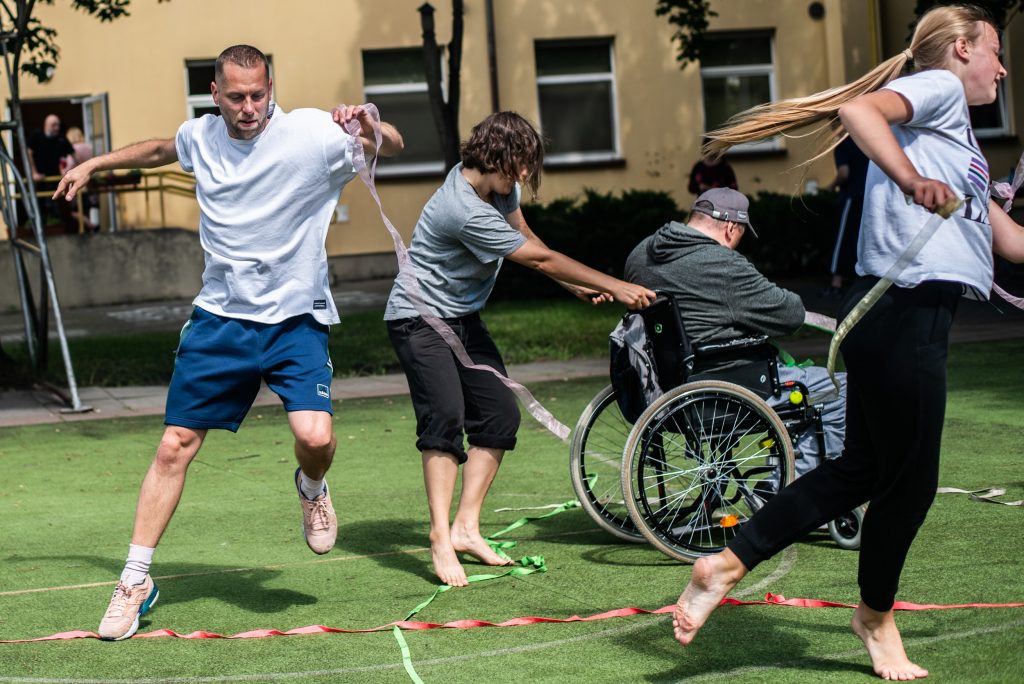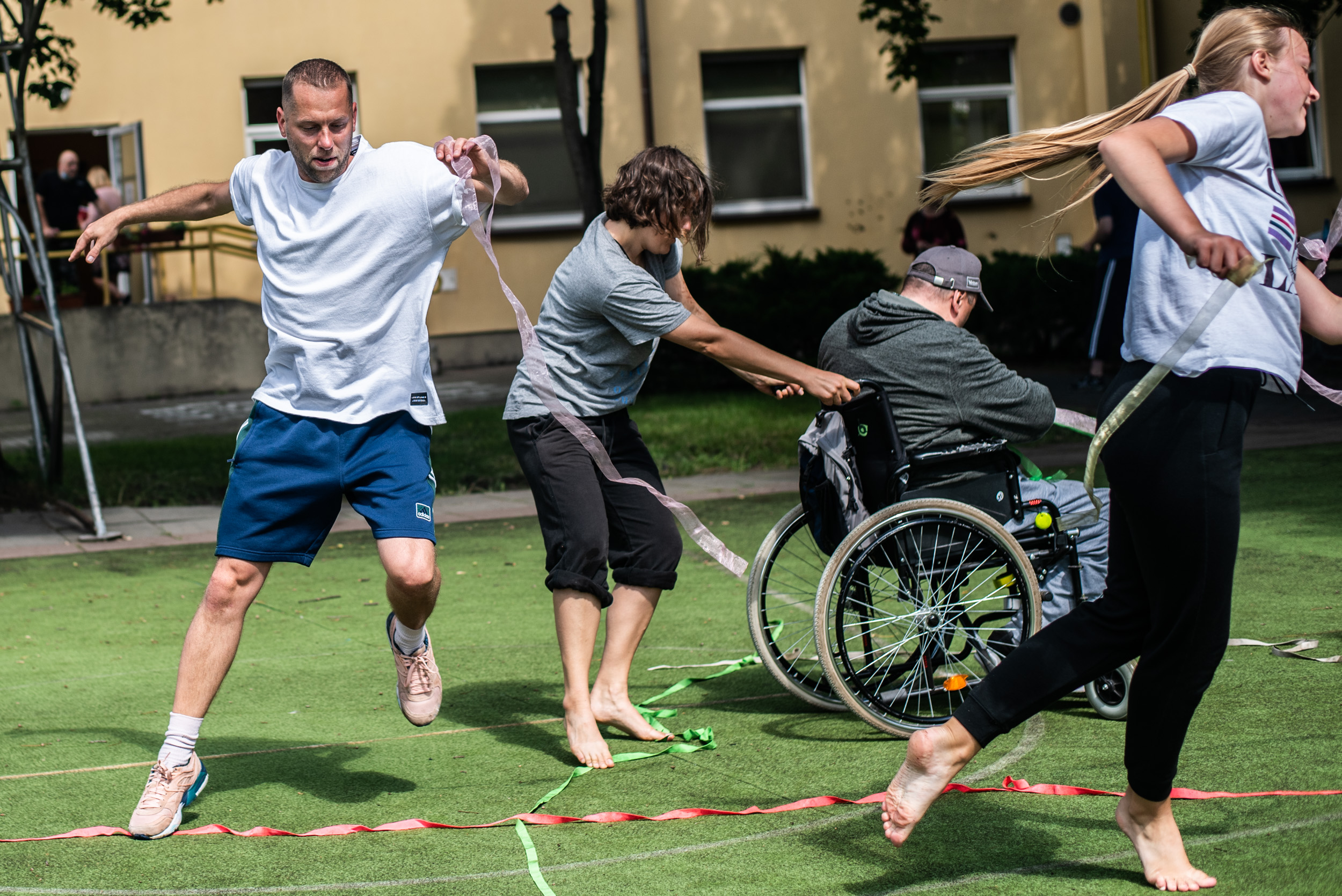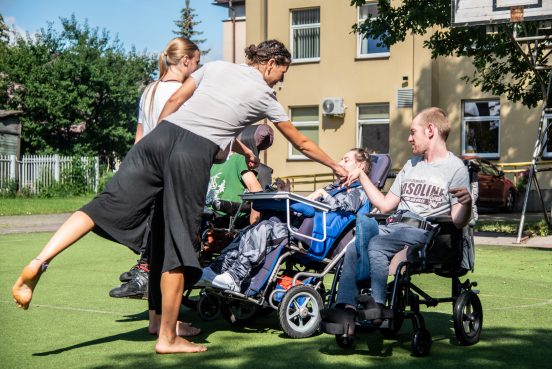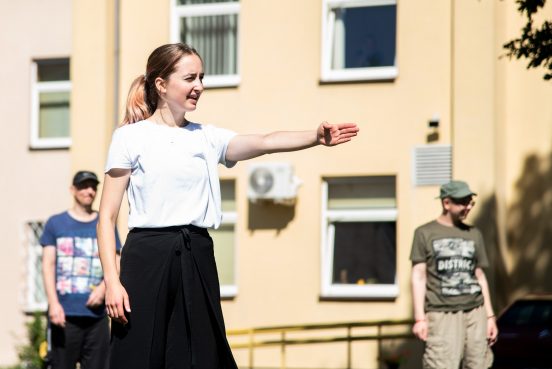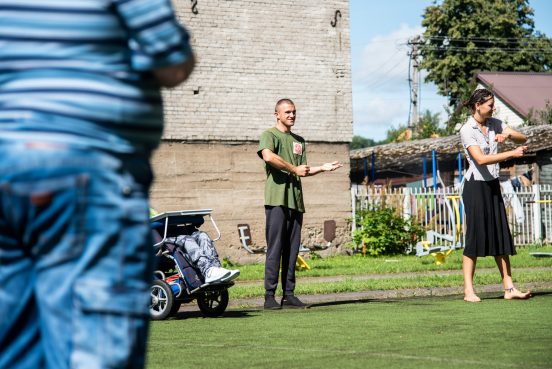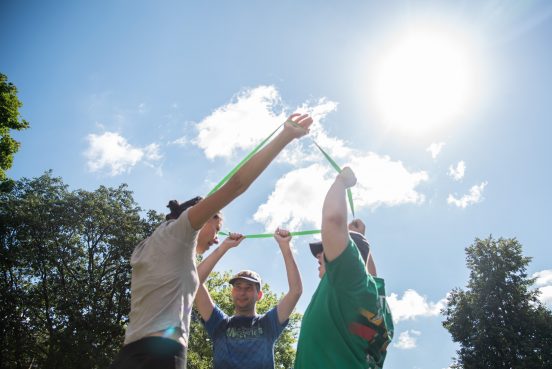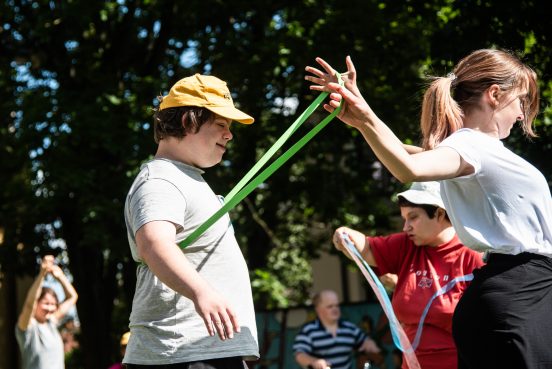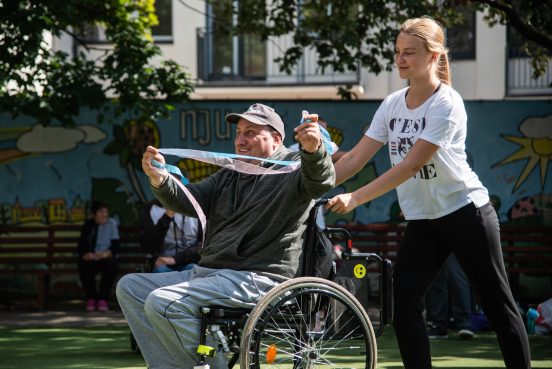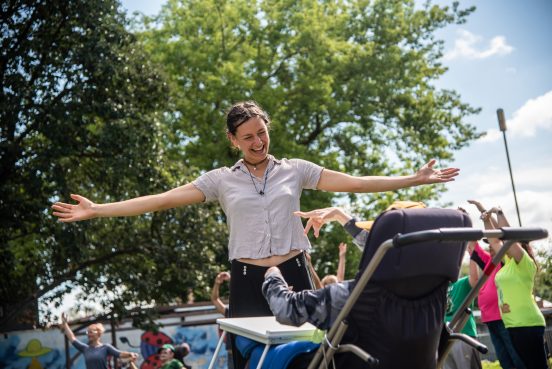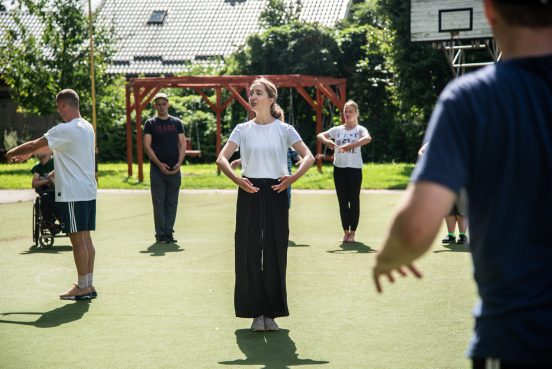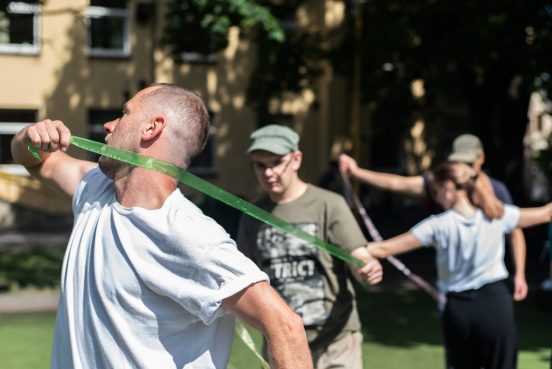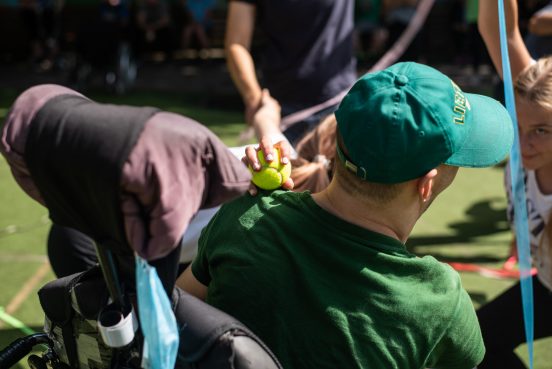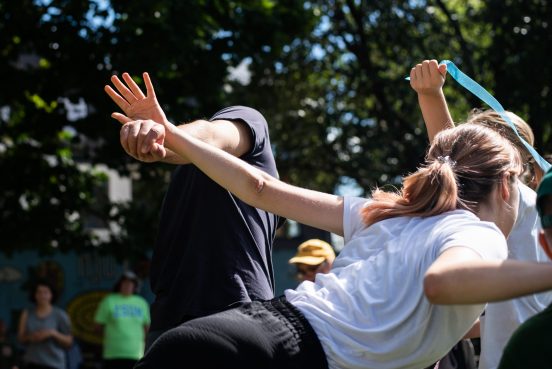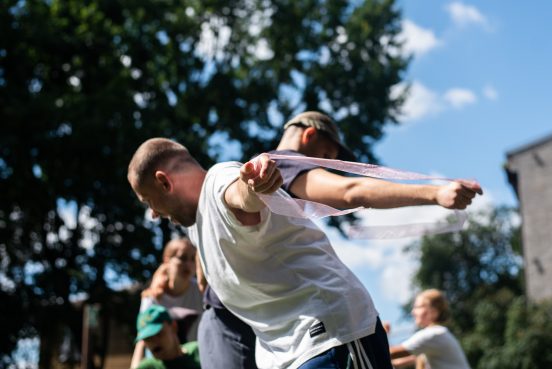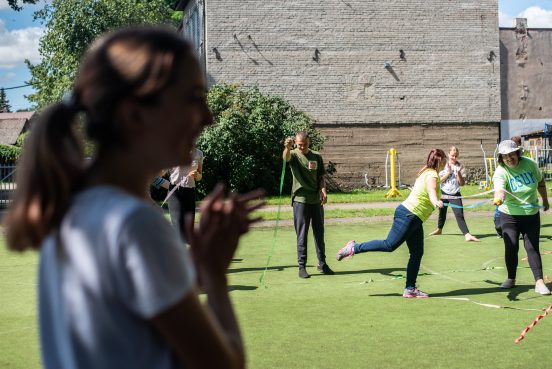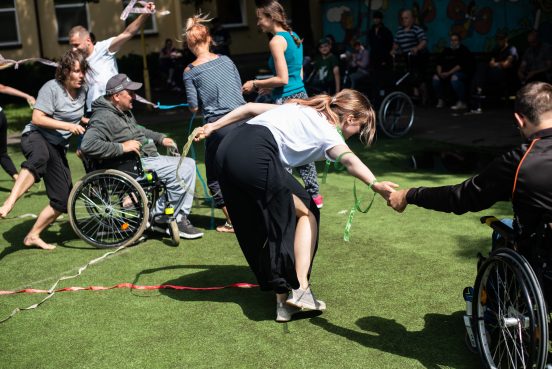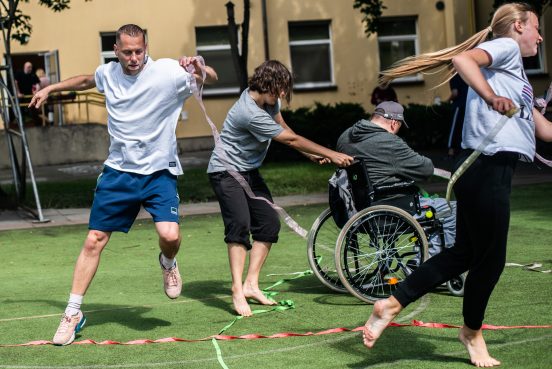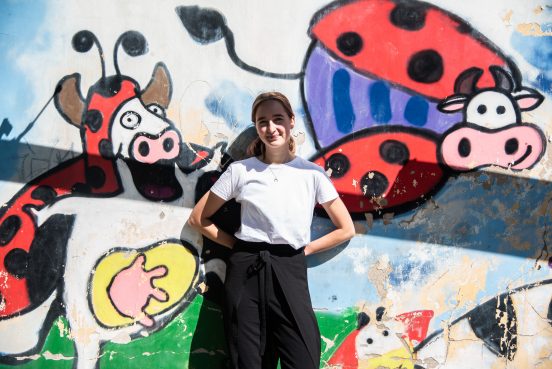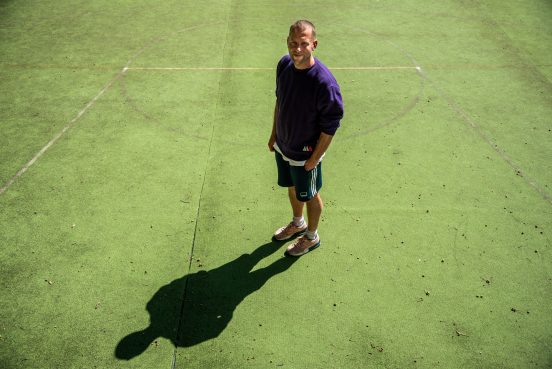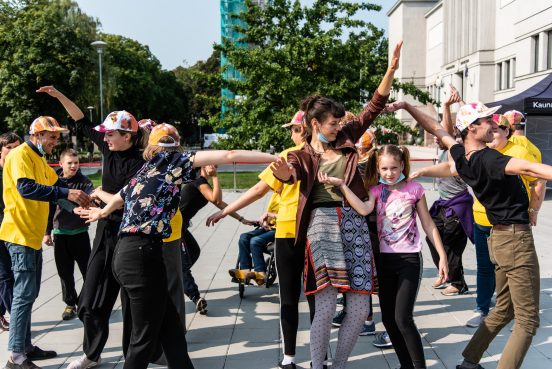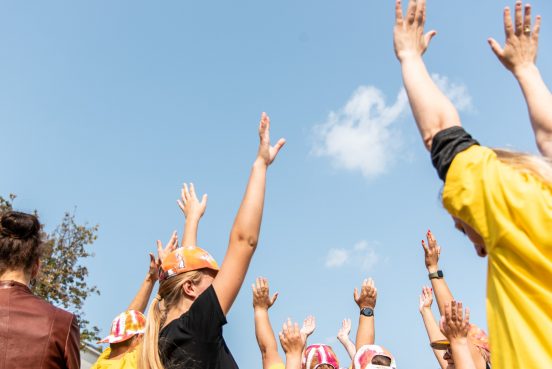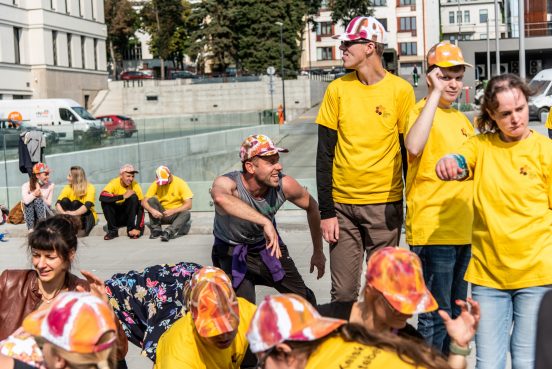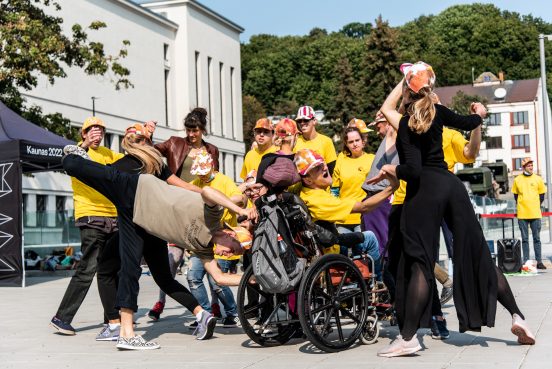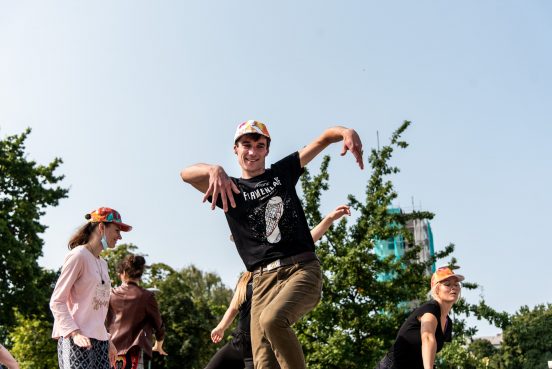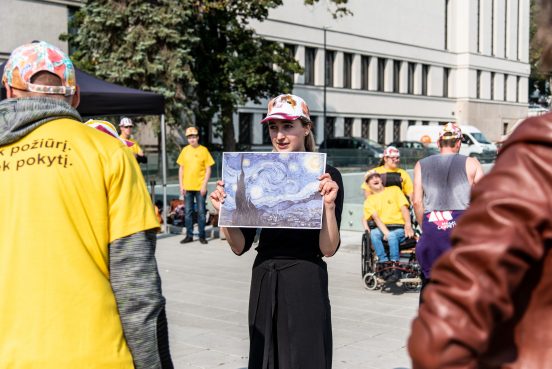“Creative Movement Laboratory” with the Centre for People with Disabilities “Korys”
Mantas Stabačinskas and Vasara Visockaitė
In Year 3 of “MagiC Carpets” platform, Kaunas Biennial launched an open call through which projects of 5 local artists were selected for implementation. “Creative Movement Laboratory” with the Centre for People with Disabilities “Korys” was conceived by contemporary dancers Mantas Stabačinskas and Vasara Visockaitė.
The first encounter of Mantas working with people with disabilities was with the Kaunas-based contemporary dance theatre “Aura”. Later, he worked on a project for children with disabilities with “Dansema” dance theatre. In 2019, Mantas worked with the Lithuanian theatre director Karolina Žernytė, founder of the “Theatre of Senses”, when they created a theatre performance “Super Powers” involving three women with disabilities. Vasara has experience of working with “Young Amici” dance group based in the UK. Both dancers approached Kaunas Biennial through the open call, because the quarantine gave them time to evaluate which direction they would like to go in their future careers. In addition, they noticed that professional dancers in Lithuania lack practical knowledge of working with people with disabilities and the understanding and acceptance of disability in Lithuania is still very closed-minded.
Through this project, for the first time, I came across the concept of ‘social dance’ and it intrigued me. “Creative Movement Laboratory” project was conceived as a series of workshops or creative laboratories where the artists would learn together with the community with the main aims of developing the creativity of people with disabilities through consistent artistic movement practices, involving members of the community in creative artistic processes and presenting the achieved results in a public space, and, in this way, promoting the inclusion of people with disabilities and increasing the sense of empathy in contemporary society. Another important aspect of the project was to involve other professional dancers in order to encourage the dance community to work more actively with people with disabilities and to deepen their knowledge in this field. Finally, and most importantly, the dancers wanted to concentrate on the activities with adults with disabilities, since many current social and educational projects are focused on children, youth and seniors with disabilities.
Mantas and Vasara started the process with open minds and no pre-set expectations. The core of the project was flexibility and experimentation and it was called the “Creative Movement Laboratory”, because it was a laboratory for everyone, both the centre visitors and the dancers involved. Many professional dancers joined this project and wanted to volunteer. They came not only from Kaunas, but also from other Lithuanian cities. As for the process itself, there was an atmosphere of openness to contributions from all participants, including centre visitors, professional dancers and volunteers. There was no specific goal, such as creating a performance, because that would have caused tension and stress and there would be no time left for exploration and mutual improvement. The aim was to create and experiment, and see where the creative process would lead. In every workshop, the dancers tried to search and analyse different ways of working with the community, always looking for feedback – verbal and non-verbal.
Every day, the group of dancers would meet and share their thoughts before the workshop and come up with its format. Workshops started with a greeting or a warm-up activity, where everyone – professional dancers, volunteers and centre visitors – standing in a circle, had to show a movement and the rest had to repeat it. Every day, a different dancer or volunteer did the warm-up, after which creative tasks were given using different objects – coloured rubber strings, tennis balls and ribbons – that helped to feel a different form or approach to movement.
Although the project had very clear aims, for me (as well as for those involved), the most important part was to ‘have a good time’. Although it sounds cliché, but the stress-free approach and the laboratory format allowed for exploration and experimentation. In the end, the project resulted in a mutual development of all participants. After the first days of “I can’t do it”, centre visitors learned that if you can’t lift your leg, you can move another part of your body, like your arm or head. The dancers encouraged everyone to move in their own unique way. One of the biggest achievements was the involvement of centre visitors, who were wheelchair users. The dancers motivated them to find alternative ways of moving. In my opinion, through this process, the professional dancers and centre visitors learned a lot about themselves, including being open, patient and confident in making changes or finding alternatives.
In figures, 27 centre visitors joined the project in the first week with increase in numbers every week until we finally reached the maximum, when the laboratory consisted of 37 centre visitors and 13 professional dancers/volunteers.
On 12 September 2020, during “Fluxus Festival” organised by the “European Capital of Culture – Kaunas 2022”, the centre visitors together with professional dancers, created an open-air movement laboratory in the newly renovated Unity Square in Kaunas city centre. The event aimed at showcasing the results of the creative movement laboratories that took place in the centre, presenting different communities that live in Kaunas city and changing societal attitudes towards people with disabilities.
This project has been realised with the generous help and assistance of:
Airūnė Ajuozanaitienė
Aistė Jančiūtė
Viltė Paulauskaitė
Linvydas Krivickas
Martyna Levanė
Giedrė Markauskienė
Kristina Nargėlaitė
Jokūbas Nosovas
Rasa Rudaitienė
Rusnė Rupšytė
Saulė Šaltytė
Grėtė Šmitaitė
Eglė Židonytė
ABOUT THE CENTRE:
Centre for People with Disabilities “Korys” (former Kaunas Disabled Youth Employment Centre) is a Kaunas city municipality budgetary institution. Since 1998, it provides social care services for people with disabilities residing in Kaunas City. Services are provided in a person’s home, in the day centre or in a home for independent living. The centre provides specialist assistance in accordance with human dignity according to his or her level of independence. People who come to the centre are happy to spend the day in an interesting and rewarding way, learn something new and develop their independence skills. In order to make people with disabilities visible in the city, the centre often organizes various activities.
The vision of the Centre is to:
- Empower people with disabilities to live as independently as possible;
- Provide psychosocial assistance for relatives of people with disabilities;
- Change societal attitudes towards people with disabilities.
Curator Neringa Kulik
